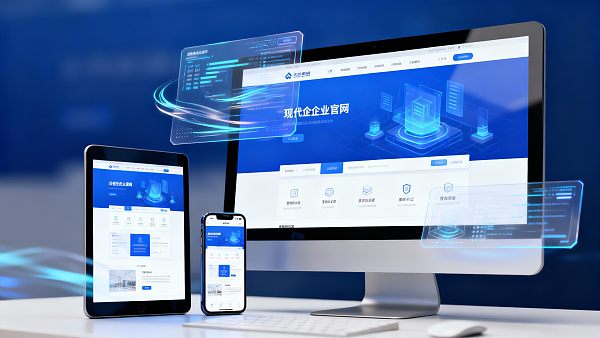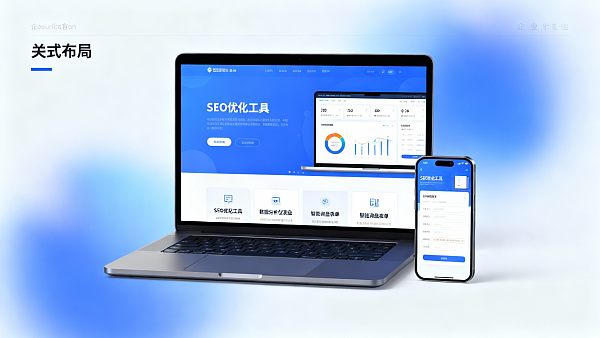Easy Operation Cloud Intelligent Website Marketing System Platform!
I. Authoritative Definition, Strategic Core, and Functional Scope of Corporate Website Development
1. Authoritative Definition and Professional Elements of Corporate Website Development
**Corporate website development** refers to the systematic engineering process where enterprises design, develop, deploy, and operate official websites based on **their own domain names and independent servers (or SaaS platforms)**, aligned with **brand strategy, target markets, and marketing objectives**. It is not merely a showcase page but a **digital asset integrating brand communication, product display, marketing, customer service, and data analytics**. Professional elements include: **international SEO technical standards, user experience (UX/UI) design, E-E-A-T content layout, data analytics and CRM integration, and multi-terminal responsive design**.
2. The Three Irreplaceable Strategic Values of Modern Corporate Websites
Viewing the corporate website as the **core hub** of digital strategy:
- **E-E-A Trust and Brand Credibility Center**: The corporate website is the sole controllable platform for enterprises to **publish authoritative information, showcase technical capabilities, highlight expert teams, and share client cases**, essential for building **global client trust and Google search authority**.
- **Privatized Data and Marketing Conversion Hub**: The corporate website is the **ultimate landing point for all digital marketing channel traffic (Google Ads/social media)**. It holds **all user behavior data**, enabling **precise user profiling, marketing attribution, and high-value inquiry capture**.
- **24/7 Globalized, Scalable Service Window**: The corporate website provides **unrestricted product displays, technical support, and inquiry services across time zones**, leveraging **multilingual/multi-currency** features to deliver consistent, professional experiences for global clients.
3. Evolution and Trends in Corporate Website Development Models
Early Phase (2000s): Dominated by Flash/static HTML, emphasizing design aesthetics but **lacking marketing functionality**. Mid-Phase (2010s): Represented by **WordPress/CMS**, focusing on content management and basic SEO integration. Modern Era (2020s–Present): Trends include **“Headless architecture, data-driven strategies, and customized user experiences”**. Website development now prioritizes **technical performance (Core Web Vitals), marketing funnel design**, and deep integration with **CRM/ERP systems**, becoming the **entry point for enterprise-level business intelligence (BI)**.
II. Five Core Technical Principles of Corporate Website Development: Performance, Security, and SEO

The underlying technical logic for modern corporate websites to achieve high efficiency and conversion:
1. Google Core Web Vitals Optimization Principle
Principle: Google incorporates **Core Web Vitals (e.g., LCP, FID, CLS)** into ranking factors. Practice: Professional website development must adopt **lightweight code, global CDN deployment, and high-performance hosting** to ensure **fast loading and stable interaction on mobile and desktop devices**, directly impacting user experience and Google rankings.
2. Responsive Design and Mobile-First Indexing Principle
Principle: Google uses **mobile-first indexing**, primarily ranking based on **mobile website content**. Practice: Websites must employ **responsive design or dedicated mobile optimization**, ensuring **all features, content, and inquiry forms** function **perfectly and seamlessly across all device sizes**.
3. SEO E-E-A-T Content and Technical Structuring Principle
Principle: Official websites are **authoritative carriers for establishing E-E-A-T trust**. Practice: Use **technical SEO** (e.g., **Schema markup for company info, products, FAQs**) to **clearly signal website authority to Google**. Content should include **expert team pages, detailed company profiles, and compliance statements** to maximize E-E-A-T signals.
4. Marketing Funnel and CTA (Call-to-Action) Design Principle
Principle: Website design must **guide users toward conversion goals**. Practice: Design pages and CTAs based on **marketing funnel stages (TOFU/MOFU/BOFU)**. Examples: **Blog articles (TOFU)** use CTAs like “Download whitepapers,” while **product pages (BOFU)** use “Get a quote/Buy now.”
5. Data Security and International Compliance (GDPR/CCPA) Principle
Principle: Global-facing websites must **protect user data privacy**. Practice: Integrate **SSL certificates (HTTPS)**, deploy **Cookie Consent Banners**, and provide clear **privacy policies** to comply with **GDPR, CCPA**, and other regulations, building **a trustworthy corporate image**.
III. Four Core Technical Features and Applications of Corporate Website Development
1. Technical Feature: Flexibility and Performance Advantage of Headless CMS
Feature: Using **Headless CMS (decoupled content management)**, separating **backend content management from frontend display**. Application: This allows websites to deliver **customized, high-speed experiences across devices (PC/mobile/App/IoT)**, while content teams manage all materials from a single backend, **significantly improving content publishing efficiency**.
2. Application: Building High-Conversion Inquiry/Quotation Systems
Application: Corporate websites should design **multi-step, intelligent inquiry forms** to replace traditional simple forms. For instance, dynamically display **customized fields** based on user-selected products or industries. Integrating **Chatbots** for real-time Q&A **reduces client wait times**, significantly enhancing B2B inquiry quality and volume.
3. Application: Deep Integration of Google Analytics 4 with CRM/ERP
Application: Websites must **embed GA4 tracking codes** and ensure all **conversion events (button clicks, form submissions, downloads)** are accurately captured. Further, directly connect **inquiry data to CRM/ERP systems** for **end-to-end digital management from leads to orders**.
4. Application: Establishing Content Pillars & Clusters
Application: Website content sections (blogs/knowledge bases) should revolve around core technologies or products, creating **“pillar content”** as **industry authority guides**, supplemented by **“cluster content”** to form a **powerful content network**. This structure not only aids deep user engagement but is also **Google’s preferred SEO content organization method for E-E-A-T recognition**.
IV. Professional Website Development vs. Template Websites: Industry Analysis and Scenarios

1. Professional Custom Websites vs. Template DIY Websites: Core Comparison
2. Typical Industry Scenarios for Corporate Website Development
Corporate websites are essential for establishing credibility in these export industries:
- **B2B High-End Manufacturing/Tech Enterprises**: Websites must be **highly professional, with easily accessible technical documentation** to establish expertise.
- **Export-Oriented Services/Consulting Firms**: Websites should highlight **expert teams and success cases** to build authority.
- **Branded DTC E-Commerce**: Websites require **sleek design, fast loading**, and seamless integration with social media and payment systems.
3. Certification and Standards for Corporate Website Development Services
Criteria for evaluating premium website service providers:
- **Technical Qualifications**: Expertise in **Google Core Web Vitals optimization, W3C compliance**, and **multilingual/Hreflang deployment**.
- **Design Standards**: Adherence to **international UX/UI guidelines**, with **brand visual identity (VI) guidance**.
- **Marketing Capabilities**: Ability to provide **funnel-based content strategies and SEO E-E-A-T layouts**.
- **Data Integration**: Seamless integration with **GA4, GTM, CRM**, and other sales/marketing tools.
V. Take Immediate Action: Upgrade Your Website into a Global High-Conversion Digital Asset!
Are you concerned about **outdated website performance and low inquiry conversion rates**? Do you desire a **Google-compliant authoritative portal**? Book a **free “Corporate Website Strategy & SEO Audit”** now, and we’ll tailor a **high-conversion inquiry system and E-E-A-T content framework** for you!
Click for Free Custom High-Conversion Website PlanFAQ

Customer Reviews


